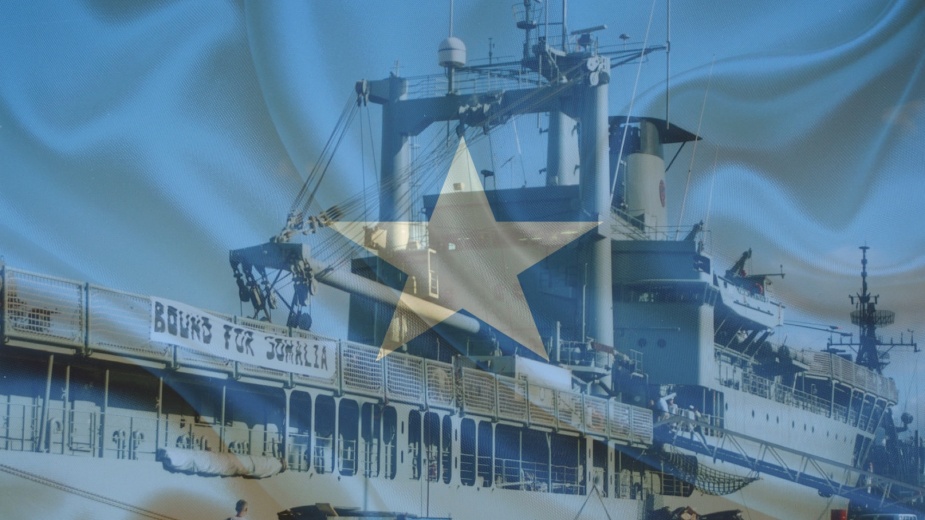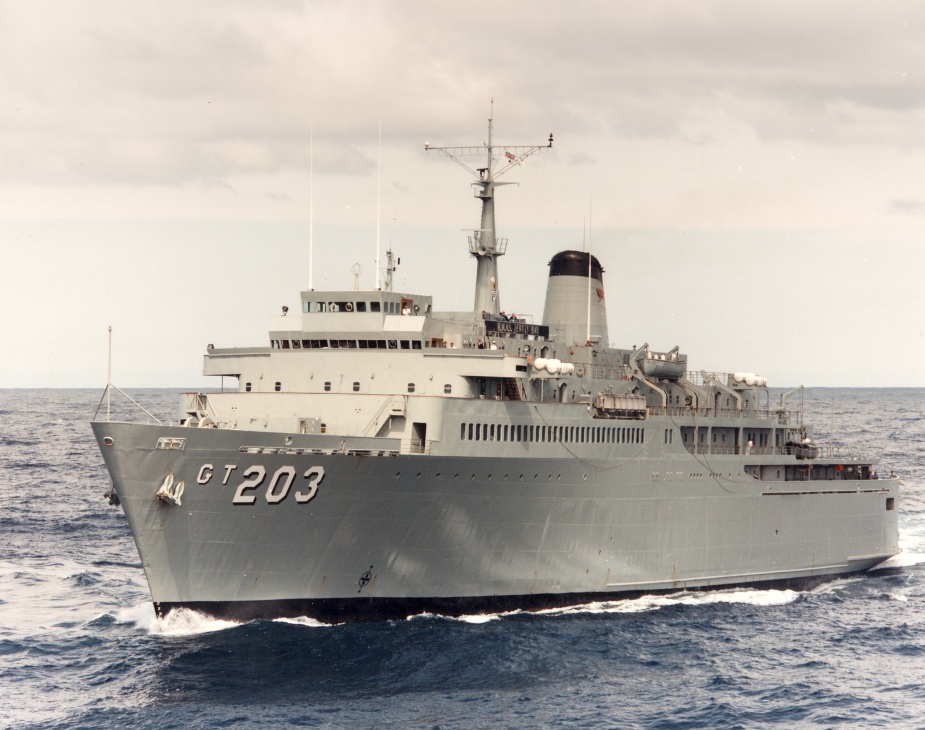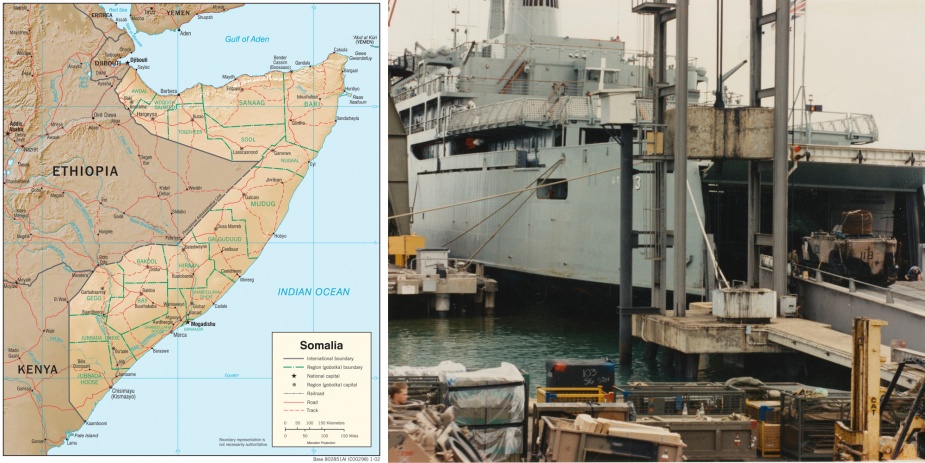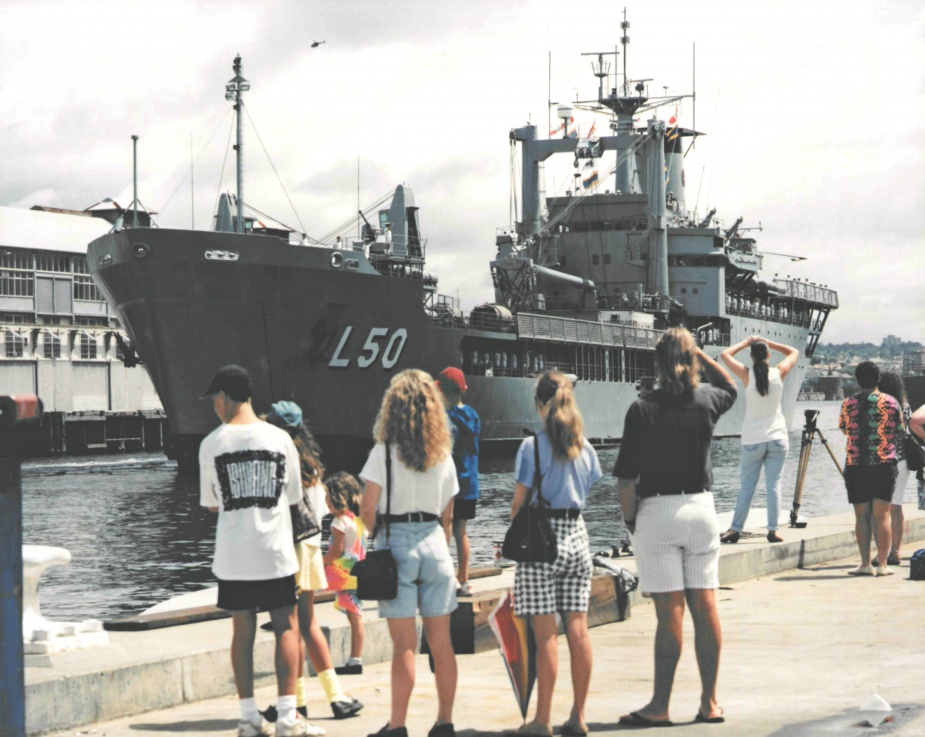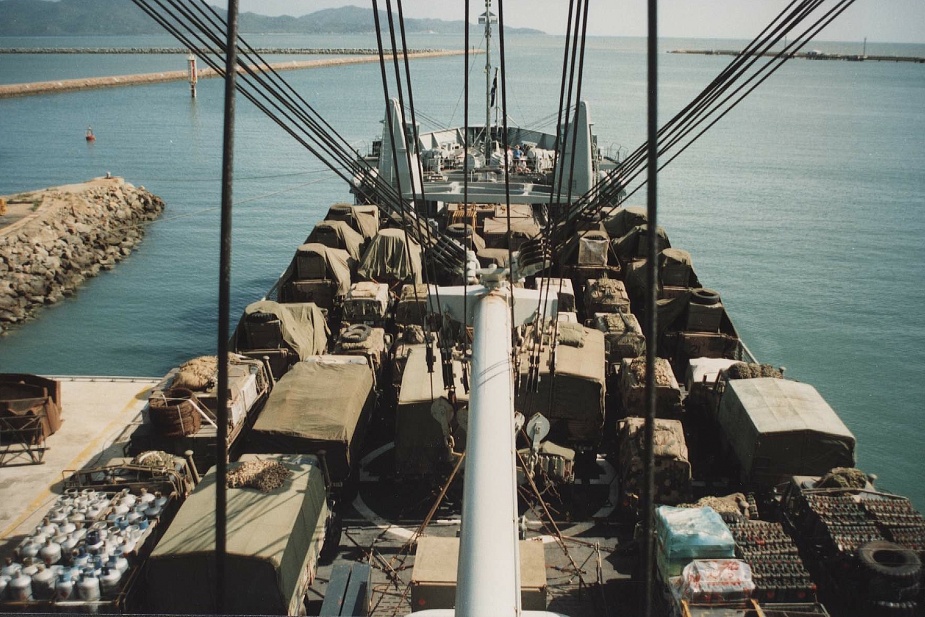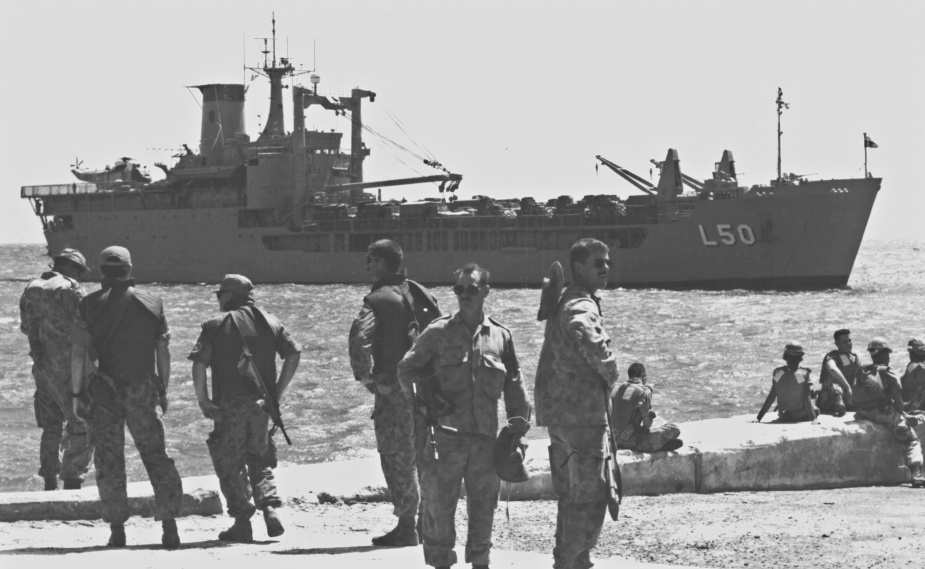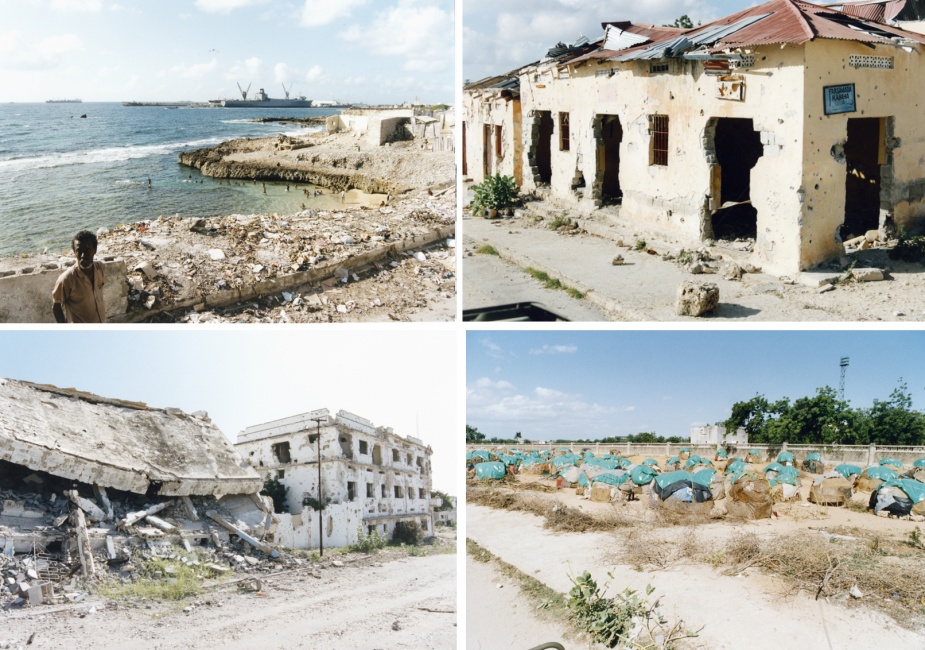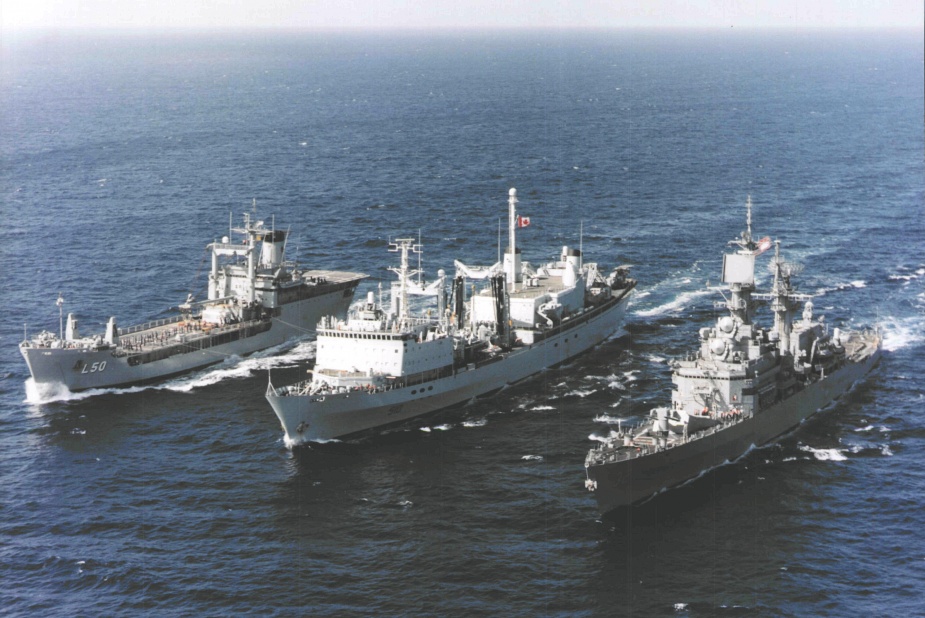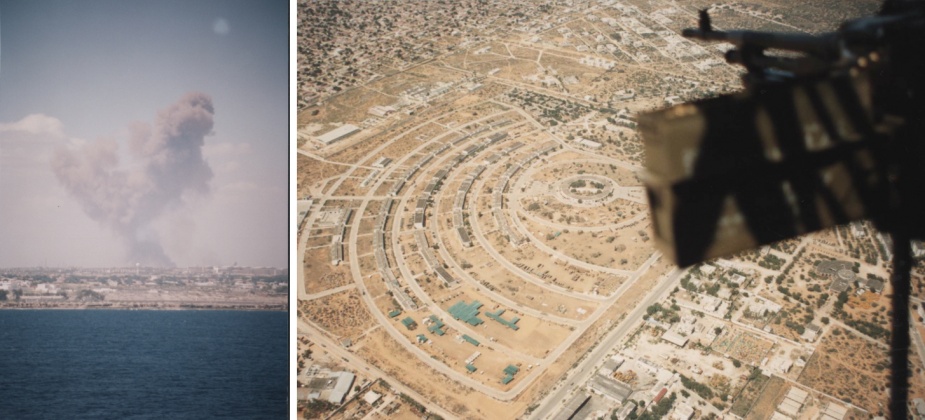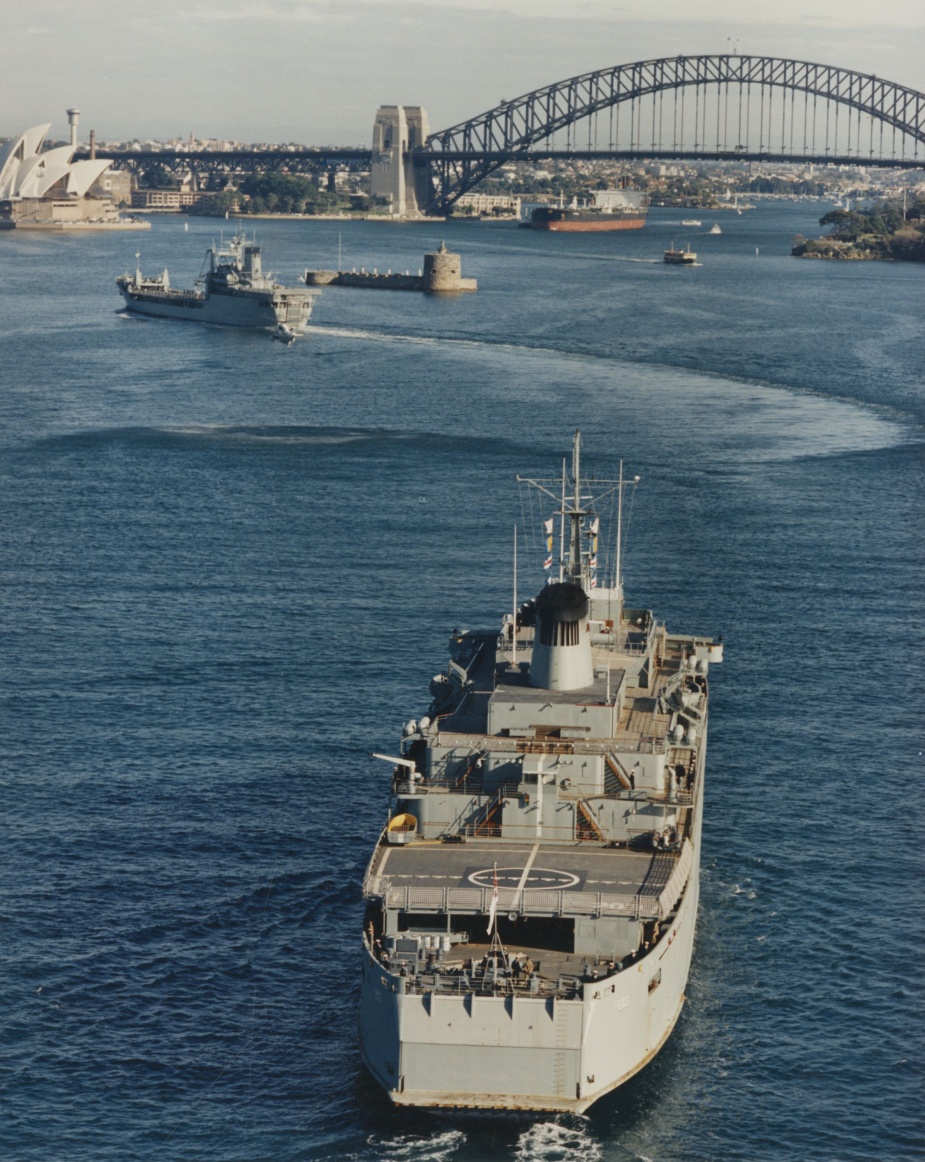Operation SOLACE - RAN Relief to Somalia 1993
On the morning of Thursday 20 May 1993, HMAS Tobruk, with personnel from 1st Battalion Royal Australian Regiment (1RAR) aboard and 844 tonnes of vehicles and stores embarked, sailed from Mogadishu, Somalia, on the first homeward leg of her voyage home to Australia following a five month deployment as part of Operation SOLACE. Later that evening she was joined by HMAS Jervis Bay which was back loading a similar load of ADF cargo and personnel.
Now, more than twenty five years later it is worth recalling the events of 1992 that saw the RAN conduct, what was then, Australia’s largest military sea-lift operation since the end of the Vietnam War.
In late 1992 Somalia was in the grip of famine following years of drought. The situation was compounded by ongoing, fierce, tribal warfare brought about following the overthrow of the Somali President Siad Barre in January 1991. Lawlessness and human rights violations were rife and armed, marauding gangs seized what little food and relief supplies made it into the country.
In January 1992, the United Nations Security Council (UNSC) passed Resolution 733 which imposed a complete arms embargo on Somalia, while at the same time urging the many warring factions to accept a ceasefire. Three months later the UNSC approved Resolution 751, reinforcing the conditions of Resolution 733 and agreeing, in principle, to establishing a UN security force in Somalia to monitor a fragile cease-fire in its capital, Mogadishu. The first UN observers arrived on 23 July, coinciding with a worldwide appeal for aid from private humanitarian organisations operating in the drought-stricken country. In August it was announced that a force of 500 Pakistanis would bolster the observer force which was christened United Nations Operation in Somalia (UNOSOM). Within days of that announcement, press images of starving, skeletal children spurred the United States to take a leading role in Somalia committing military assets to an aid operation designated PROVIDE RELIEF. This saw US military transport aircraft immediately mobilised to carry humanitarian aid to the country.
Meanwhile, in Australia, consideration was being given to committing a 30 strong movement control unit to UNOSOM to assist with the distribution of aid. This was approved on 14 October and six days later the first Australian soldiers arrived by air in Mogadishu. Their deployment came at a time when the situation in Somalia was rapidly deteriorating. Aid ships berthing in the ports of Kismaayo and Mogadishu were routinely falling victim to banditry and looting and UNOSOM observers were themselves coming under increasing attack. In late November the United States announced that it was prepared to commit ground troops to Somalia using a vanguard of 1800 marines to spearhead landings at Mogadishu and Kismaayo. On 3 December the UNSC passed Resolution 794 which endorsed the conduct of a US-led multinational peace enforcement operation in Somalia to be called RESTORE HOPE.
On 9 December 1992 the US marines landed, unopposed, in Mogadishu. On the same day, news broke in Australia that the government was giving serious consideration to a United States request to commit a battalion sized number of troops to Somalia as part of RESTORE HOPE. Other countries, including Belgium, France, Canada and India, were considering similar requests or had already committed troops.
On 15 December, the Australian government approved Operation SOLACE, the deployment of ADF assets to Somalia, under the auspices of a wider US-led Unified Task Force (UNITAF). The primary contribution comprised 1RAR supported by B Squadron 3rd/4th Cavalry regiment and other select components of the regular army. The length of the 1RAR Group’s commitment to SOLACE was limited to 17 weeks which would see it remain in Somalia until the over-arching RESTORE HOPE transitioned to a new, larger-scale UNOSOM II.
With the decision to deploy made, attention immediately turned to planning the most effective means of transporting the vehicles, equipment and stores from Townsville, across the Indian Ocean to Africa. What followed was, and remains, a superlative example of ‘mobility in mass’, executed at short notice by the RAN’s heavy lift ships of the time, Jervis Bay and Tobruk.
The Commanding Officers of both Jervis Bay (Commander EL Morgan, RAN) and Tobruk (Commander KB Taylor, RAN) had each been given short notice warning of the possibility of an impending deployment and consequently officers from both ships participated in planning a sea-lift operation.
At that time, neither ship was in a state of operational readiness. Jervis Bay had recently completed a refit and was undergoing sea trials and work-ups, while Tobruk was in dockyard hands having suffered a major engineering defect on her port main engine in November. Compounding the situation, many of Tobruk’s crew had been sent on Christmas leave following a busy year during which the ship had spent eight months away from Sydney. The crew was immediately recalled, while engineers worked around the clock to rebuild Tobruk’s crippled engine. Both Tobruk and Jervis Bay had rehearsed sea-lift and ‘logistics-over-the-shore’ operations with the army during Exercise KANGAROO 92 earlier in the year and this was to stand them in good stead.
Jervis Bay began loading stores on 17 December, sailing for Townsville two days later with the RAN Sea Training Group (STG) embarked. Between Sydney and Townsville the STG oversaw the completion of Jervis Bay’s work-ups and the successful completion of an Operational Readiness Evaluation. Arriving in Townsville on 22 December, the ship began the task of loading the battalion group’s equipment. Over the next two days, 800 tonnes of cargo comprising armoured personnel carriers (APC), trucks, four-wheel drive vehicles, ammunition, provisions and general cargo was embarked in Jervis Bay before she was farewelled by the Minister for Defence, Senator R Ray and the Chief of Defence Force, General P Gration, AC, OBE on Christmas Eve. She then shaped a course for Darwin where she refuelled before continuing on to Mogadishu, via Diego Garcia.
In Sydney, Tobruk’s ship’s company and her small ship’s army detachment (SAD) were making steady progress reassembling their ship, embarking stores and preparing her for a nominal six month deployment. Morale was high, in spite of the short notice of the operation, and the prospect of yet another lengthy period away from their home port. On Christmas Eve, those of Tobruk’s crew who could be spared were stood down to spend Christmas Day with their families before returning to the ship on Boxing Day. By then, a Sea King utility helicopter from the Fleet Air Arm’s 817 Squadron had embarked along with 16 aircrew and maintenance personnel.
The ship sailed from Sydney on 26 December with STG embarked to oversee an intensive four day training regime which culminated in the ship being declared mission capable prior to its arrival in Townsville. Loading began soon after the ship berthed. It was a labour intensive evolution that necessitated a high degree of flexibility by the SAD freight handlers. Load plans had to be frequently readjusted due to the arrival of unexpected consignments of stores coupled with a residue of equipment left behind by Jervis Bay. Every spare bit of space in the ship was used and loading stopped only to counter a dangerous toxic hazard incident that occurred in the forward end of the ship on 30 December. It was quickly dealt with and by the following morning over 800 tonnes of cargo comprising APC, vehicles, equipment and stores had been embarked.
Following a brief farewell by the Minister for Defence, Senator R Ray; the Maritime Commander Rear Admiral RAK Walls, RAN; and Land Commander Major General MP Blake; Tobruk sailed on 31 December following the route taken by Jervis Bay. She arrived in Darwin on 4 January 1993 where she refuelled before continuing on to Diego Garcia.
Both Jervis Bay and Tobruk made good use of the long passage across the Indian Ocean. Ship’s defence teams received additional small arms training, intelligence briefs were conducted and damage control drills were conducted daily. Jervis Bay arrived in the Area of Operations (AO) on 12 January anchoring some five miles from the port. Contact with the Commander of Australian Forces Somalia (CAFS) Colonel WJ Mellor and the Commander of Naval Forces Somalia (COMNAVFOR Somalia), Captain JW Peterson, USN was quickly established and with the help of the RAN Liaison Officer assigned to CAFS, Lieutenant AR Powell, RAN, disembarkation plans were soon established.
Early in the morning of 14 January, Jervis Bay proceeded into the port of Mogadishu where she initially berthed, stern-to, at the RO/RO facility. This was achieved with some difficulty due to prevailing winds and the restricted waterway. The location of the RO/RO ramp also meant that, when utilised, up to two thirds of access to the port was restricted while vessels unloaded.
The port of Mogadishu had been heavily reinforced. Shipping containers were stacked two high around the port’s perimeter and a continuous armed picket comprising US marines was mounted to provide further security. Within six hours, the cargo from Jervis Bay’s vehicle deck and between deck holds had been unloaded. She then shifted to an alongside berth where the remainder of her upper deck cargo was landed. By 20:10 that evening the evolution was complete. The remainder of the night was spent alongside amidst the sight/sound of sporadic gunfire coming from within the city. This would prove to be an ongoing occurrence throughout SOLACE, intensifying as the months passed.
The following morning the embarked force was landed, after which the ship sailed to rendezvous with Tobruk. The two ships met at sea on 17 January during which time Tobruk’s command team received important briefings from Jervis Bay. The ships then parted company, Jervis Bay proceeding home via Singapore, while Tobruk continued her voyage to Mogadishu arriving there on the evening of 19 January.
The following morning Tobruk berthed at the RO/RO facility. Ship’s defence teams closed up and under the added protection of coalition forces, disembarkation of cargo and personnel began. The evolution was completed early on 21 January, at which time the ship joined other multinational force ships at anchor in the harbour roadstead. At that time it was still unclear whether Tobruk would return to Australia or remain in the AO in support of CAFS providing logistic and communications support. Ultimately a decision was made that Tobruk would remain in theatre for the duration of SOLACE.
Over the next five months, Tobruk conducted continuous resupply runs to neighbouring Kenya, carrying building materials and humanitarian aid supplies between Mombasa and Mogadishu. Water was a precious commodity and restrictions concerning its use were enforced throughout the deployment. On several occasions Tobruk was called upon to supply coalition ships with water when their own reserves were running low. Stores were routinely unloaded in Mogadishu where the security of the city waxed and waned as warring Somali gangs clashed. Incursions into the port to pilfer humanitarian cargo were not infrequent, and on at least one occasion the perimeter surrounding the port was set alight by Somalis. As a security measure, coalition ships spent as little time as possible in the port, anchoring instead in waters close to the coast to the south of the harbour.
An exercise program with coalition ships was also initiated which saw Tobruk participate in an ongoing number of serials designed to maintain operational readiness. This included exercising with US Navy SEALS in visit, board, search and seize drills designed to intercept ships involved in arms smuggling. Throughout the deployment, Tobruk’s Sea King helicopter was also used variously in support of the operation, making several flights to Baidoa.
Ashore, the 1RAR Group was actively involved in enforcing security in its assigned Humanitarian Relief Sector at inland Baidoa. This enabled the safe delivery of more than 8000 tonnes of humanitarian relief supplies. Throughout its deployment the 1RAR Group was involved in numerous contacts with Somali gunmen during which a number of Somalis were killed or wounded. Many others were detained and the confiscation of weapons was commonplace. One Australian soldier was accidentally killed in April as a result of an unauthorised discharge from a fellow soldier’s weapon.
In late April, Tobruk took passage to Port Victoria in the Seychelles for the first purely recreational visit of the deployment. She returned to anchor off Mogadishu on 6 May where plans were finalised for the extraction of the 1RAR Group and the back-loading of its stores and equipment. This began on 14 May and continued until 16 May, at which time Tobruk moved to the anchorage off Mogadishu to await the return of Jervis Bay the following day.
The two vessels arrived in Townsville on 16 June where they were greeted with a civic reception hosted by the Lord Mayor of Townsville, Mr T Mooney. Unloading operations proceeded as planned and were completed within two days. Both ships then sailed independently before rendezvousing to enter Sydney together on Monday 21 June.
While this was the end of the RAN’s involvement in RESTORE HOPE it was not the end of the ADF contribution to UNOSOM II which saw small Australian service contingents, comprising members from all three Services, assigned to it between May 1993 and March 1995.
Was RESTORE HOPE a success? To answer this question it is worth considering the reflections of Mariam Arif Gassem, a Somali woman who lived through the tragedy of her country’s descent into anarchy and who observed in her book entitled 'Hostages, The People Who Kidnapped Themselves', that:
When UNITAF went back home in April 1993, most of the Somali people were beginning to be properly fed and medically cured. They were ready and willing to begin the normal activities of life and provide directly for the needs of their own families. Farmers started to grow crops, schools, hospitals and markets were re-opening, but everybody was aware that anarchy was only partially and temporarily somewhat bridled, and only then during the presence of UNITAF. Their departure was to see those fires of chaos re-ignite, for they were never totally or even seriously contained.
A month after UNITAF’s departure, disorder and insecurity returned to Somalia and before long the world’s attention was again focused on Mogadishu following the ‘Blackhawk Down’ incident of October 1993.
From the RAN’s perspective, the effective sea-lift of a battalion group’s heavy vehicles and necessary supplies at short notice and the support to that group through the ongoing presence of an amphibious heavy lift ship was an unbridled success. For Jervis Bay it was to prove a highlight in her career. For Tobruk it was to be one of many successful amphibious operations to follow in a career that spanned more than 30 years.
References
- Royal Australian Navy, HMAS Tobruk Reports of Proceedings, 1992- 93, copies held by Sea Power Centre – Australia.
- Royal Australian Navy, HMAS Jervis Bay Reports of Proceedings, 1992-93, copies held by Sea Power Centre – Australia.
- Bob Breen, 'A Little Bit of Hope, Australian Force Somalia', Allen & Unwin, 1998.
- Mariam Arif Gassem, 'Hostages, The People Who Kidnapped Themselves', Genera Services, 1994.
Sea Power Centre – Australia
Sea Power Centre - Australia
Department of Defence
PO Box 7942
Canberra ACT 2610
seapower.centre@defence.gov.au

